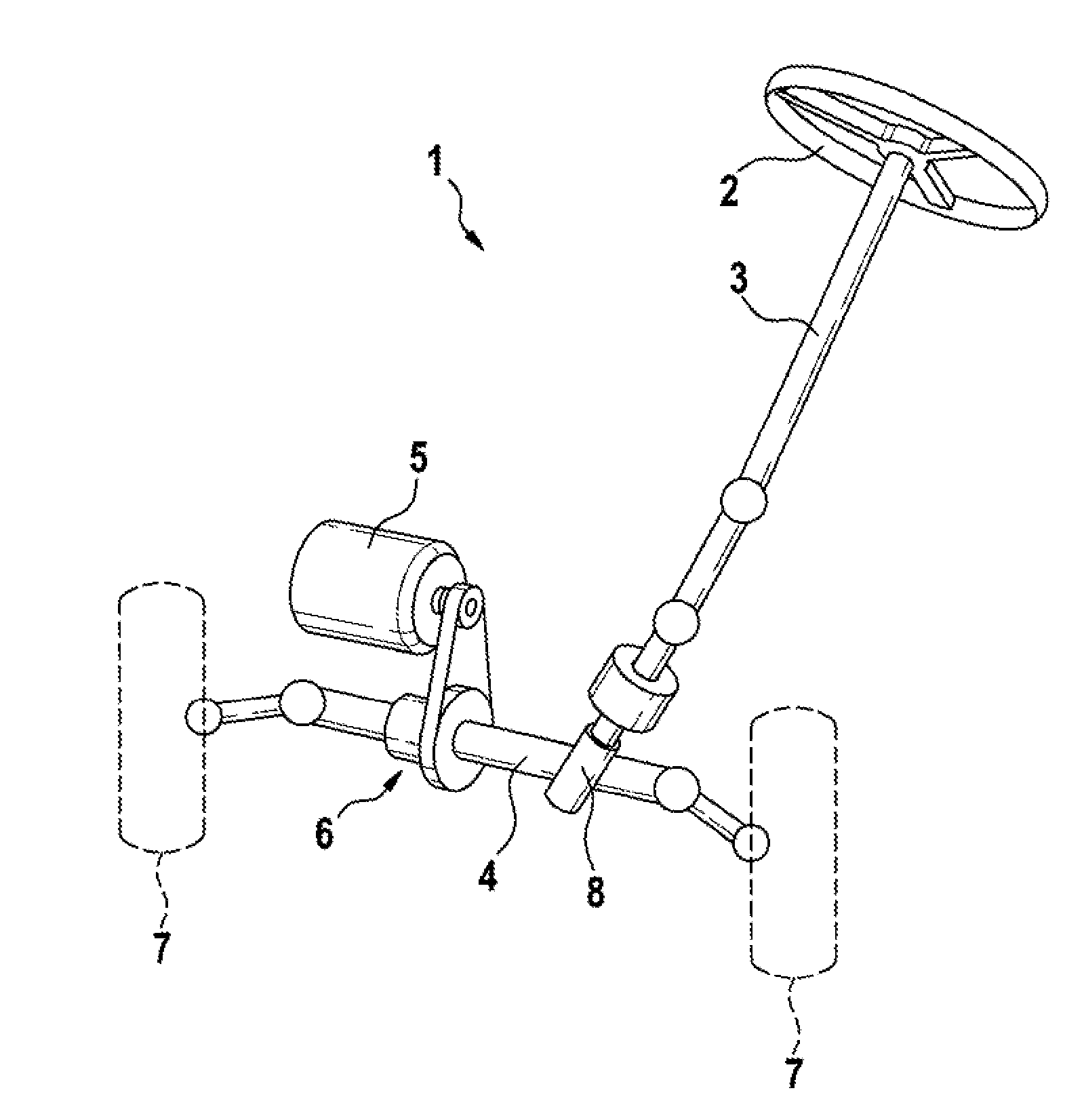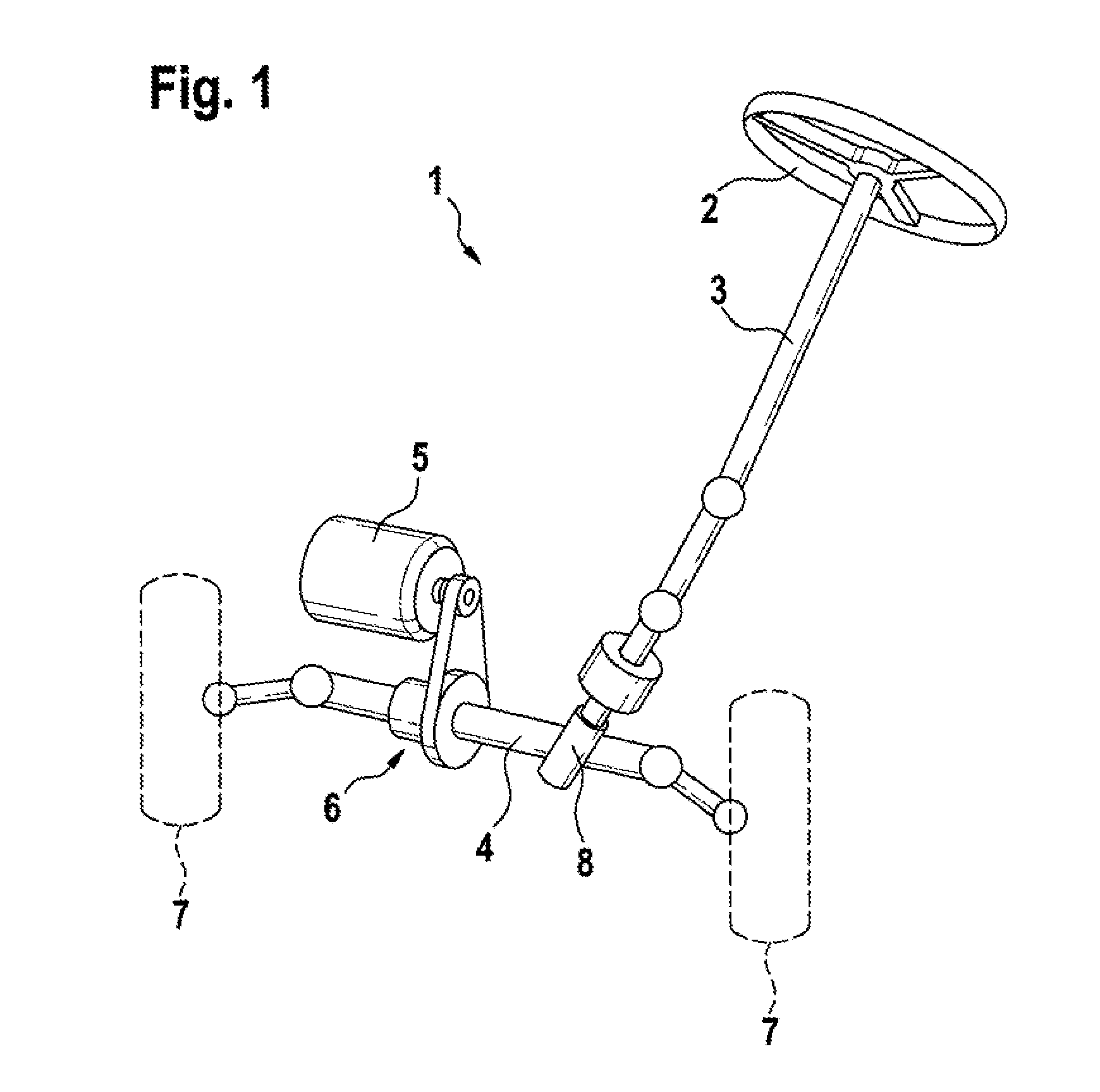Steering drive for a motor vehicle
a technology for steering drives and motor vehicles, applied in electrical steering, synchronous machines with stationary armatures, rotating magnets, etc., can solve the problems of increased noise generation, high noise emissions of electric motors, and high operating speed required for boosting steering thrust, so as to reduce eddy current losses and reduce the detent torque of rotors
- Summary
- Abstract
- Description
- Claims
- Application Information
AI Technical Summary
Benefits of technology
Problems solved by technology
Method used
Image
Examples
Embodiment Construction
FIG. 1 schematically shows a steering drive 1 according to the invention. The steering drive 1 comprises a steering column 3, on which a steering wheel 2 is disposed for manipulation by a driver of the motor vehicle (not depicted). Said steering drive 1 furthermore comprises a connecting rod 4, which interacts with the steering column 3 by means of a gear assembly 8, particularly by means of a ball screw. In addition, said steering drive 1 comprises an electric motor 5, which interacts with the connecting rod 4 via a belt drive 6. The electric motor 5 is disposed in this instance substantially parallel to said connecting rod 4. The wheels 7 of the motor vehicle are additionally depicted here for the sake of clarification.
FIG. 2 schematically shows an embodiment of an electric motor 5 for the steering drive 1 according to the invention in a cross-sectional view. The depiction comprises a first embodiment of such an electric motor 5 in a first half (a) and a second embodiment of such ...
PUM
 Login to View More
Login to View More Abstract
Description
Claims
Application Information
 Login to View More
Login to View More - R&D
- Intellectual Property
- Life Sciences
- Materials
- Tech Scout
- Unparalleled Data Quality
- Higher Quality Content
- 60% Fewer Hallucinations
Browse by: Latest US Patents, China's latest patents, Technical Efficacy Thesaurus, Application Domain, Technology Topic, Popular Technical Reports.
© 2025 PatSnap. All rights reserved.Legal|Privacy policy|Modern Slavery Act Transparency Statement|Sitemap|About US| Contact US: help@patsnap.com



